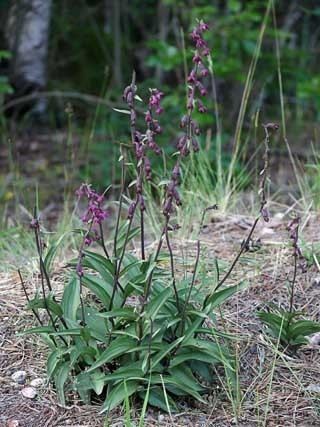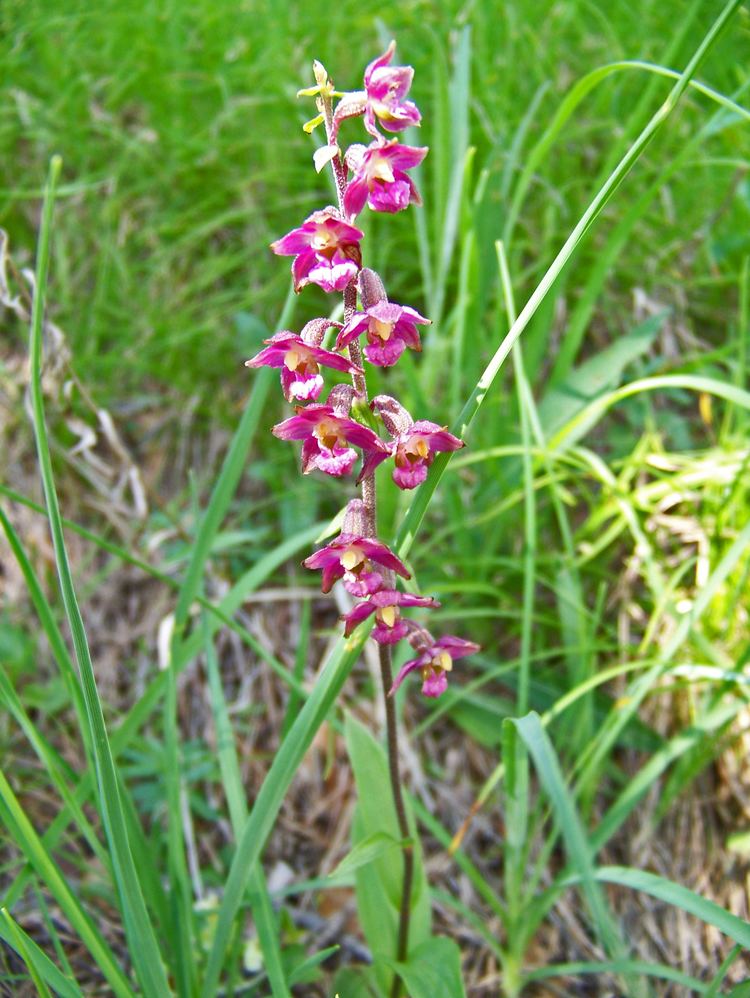Rank Species | Family Orchidaceae Higher classification Epipactis | |
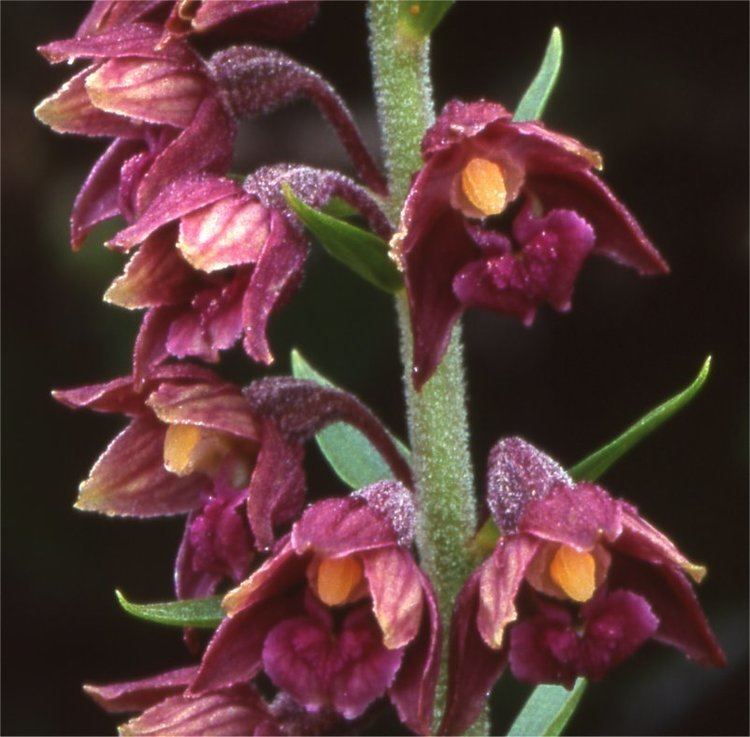 | ||
Similar Epipactis, Cephalanthera rubra, Epipactis helleborine, Orchids, Epipactis palustris | ||
Epipactis atrorubens top 11 facts
Epipactis atrorubens, the Dark-red Helleborine or Royal Helleborine, is an herbaceous plant from the family Orchidaceae.
Contents
The plant is hardy and has a short rootstalk, often with multiple, fleshy roots. It blooms from June to August with erect, mostly purple inflorescences with dense hair on the tops, standing between 20 and 80 cm in height. The blossoms emit a strong vanilla scent, especially in warm weather. The flowers sometimes vary in color, but are in general reddish-brown, and they are often pollinated by insects, particularly bees. The fruit is a capsule, out of which the light, dustlike seeds are spread by the wind. A number of natural hybrids with other Epipactis species are known.
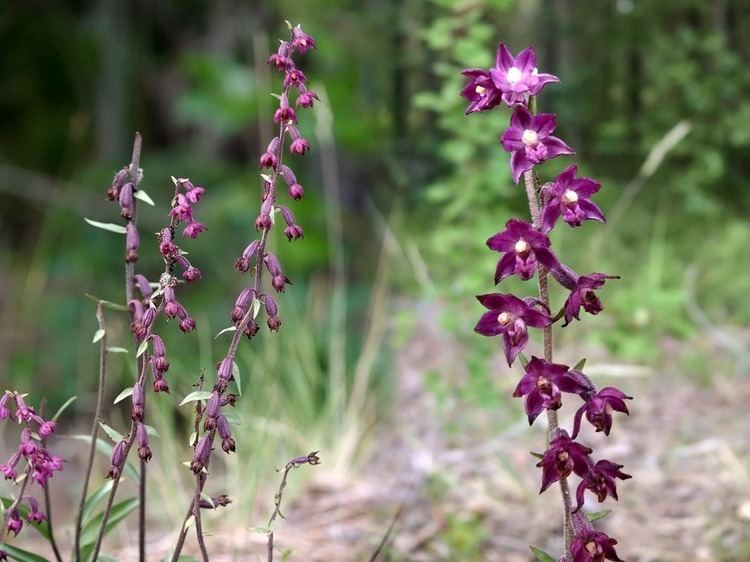
The Dark Red Helleborine is widespread across Europe, and is found in the north to the subarctic, in the south to the Mediterranean, and in the east to Western Siberia and the Caucasus. (Codes) The orchid grows at altitudes from sea level to 2400 m, and so can be found in mountainous regions such as the southern Alps. In Central Europe it has been in decline in recent decades. It is not, however, one of the most severely threatened species of orchid. The species is also reportedly naturalized in one location in the US State of Vermont.
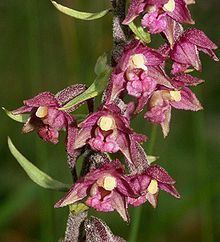
The Dark Red Helleborine favours warm and dry locations, with soil basic to neutral in pH, nutrient-poor, and permeable. It grows in loose rock, scree, or sandy soils above a limestone substrate, including dunes, lawns, or open forest. It is also a pioneer species, which settles in fallow areas, road embankments, and waste dumps, in the early to middle stages of ecological succession, among communities of grass and bush and light birch stands.
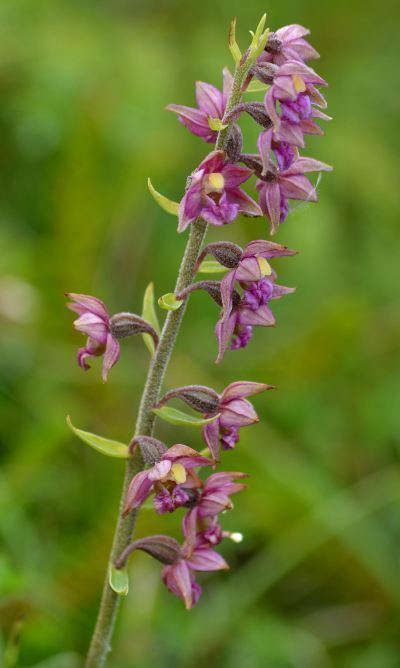
As with many other species of orchids, the species is legally protected in some countries.
Plantlife designated the Dark Red Helleborine as the county flower for Banffshire, Scotland.
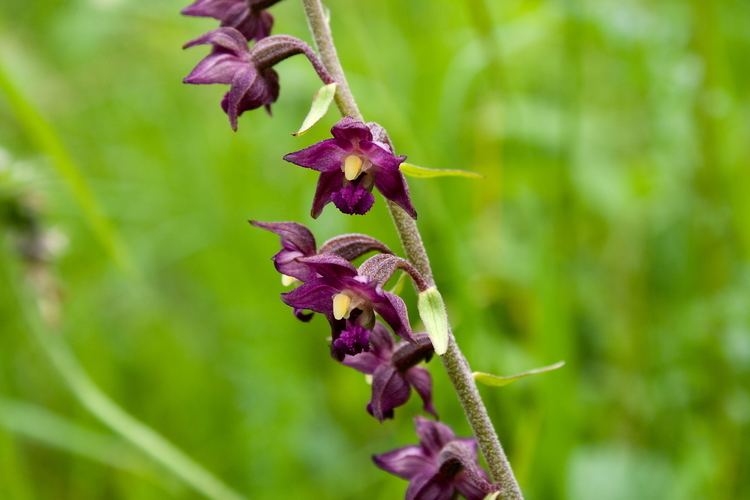
Epipactis atrorubens
